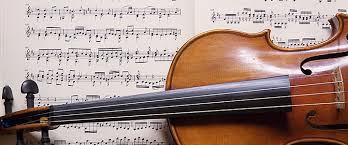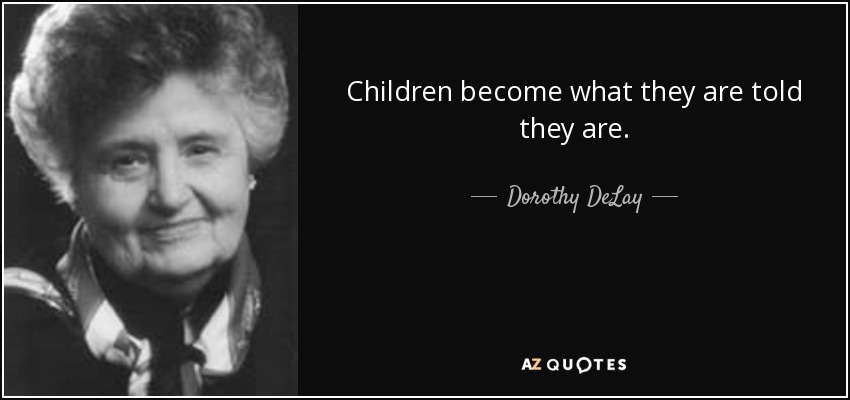
Which Repertoire to Teach?
Introduction
An important aspect of teaching the violin is the task of selecting what repertoire the students will work on. Many teachers don’t pay the necessary attention to this, and they just choose for their students, pieces that they have learned themselves during their studies, they copy graded repertoire lists or just pick etude books like Kreutzer or Rode. The thinking behind this approach is that the music corresponds to the technical and musical abilities of the student. In this article I propose ways of selecting repertoire for teaching which I hope will help the teachers make more informed decisions. Therefore, I decided to use the second person, as if I am having a friendly conversation with the reader.
The student’s technical and musical abilities, and learning approaches
Before the selection of any repertoire, you must thoroughly analyze your student’s playing. Spot technical strengths and weaknesses. This analysis can be based on the four pillars of violin playing that I have mentioned in several prior articles: Pitch, Sound, Rhythm and Ease. The analysis should extend to the subcategories, too, for example, the basic bow strokes, shifting, and fast playing. Furthermore, as Ivan Galamian states in his book ‘Principles of Violin Playing and Teaching’, the teacher must investigate less obvious problems like weak fingers or joints that could block a student’s further development. Another important aspect of this analysis is the student’s response to your teaching. D. C. Dounis used to spend a significant part of his lengthy lessons discussing with his students and he did that to understand them as learners in order to adjust his teaching accordingly.
Setting Goals
The primary analysis of the technical and musical abilities and learning approaches of each student could lead you to set technical and musical goals for them. The next step is to prioritize those goals. Decide what the most important issue to resolve is (technical, musical, approach to learning) and focus on it. Although, every teacher will prioritize their goals based on their own experiences and approach to teaching, I believe that some issues must be addressed before others. For me, posture is an important one. I believe that correct posture is a vital precondition to fix other technical and musical deficiencies. Another one is intonation, which should be addressed before fast playing.
Selecting Repertoire
Your choices of repertoire must support the goals and priorities you have set, but it is equally important those choices to motivate the students. So, you must try whenever possible to include your students’ preferences in the process of repertoire selection. This will make your students feel important. Furthermore, a piece that they select might counterbalance the technical exercises that you proposed, which probably look boring to many students. What is more, you must find interesting ways to “sell” the scales and technical exercises to the students, by giving them meaning and purpose so the student realizes their value. To give a specific example, you can show to your student all the scale patterns in the third movement of the Mendelssohn Violin Concerto so they will realize that by practicing scales properly they will be able to play this beautiful piece in the future.
Another aspect of consideration when choosing repertoire is the level of difficulty. The famous violin pedagogue Mimi Zweig has her students prepare pieces of three different levels concurrently. The first is lower than the student’s level and it helps to keep the confidence high. The second is at the student’s level which allows them to feel good because the challenge is attainable. The third is above the student’s level, in order to keep them on their toes (ego intact) and make sure they know there are always new tasks to be mastered (See thestrad.com). I believe this is an approach worth trying.
Repertoire Categories
For me the repertoire categories one can select from are the following: small pieces, scales, technical exercises, concertos, show pieces, pieces for solo violin, sonatas for violin and piano and pieces for chamber music ensembles. You should aim for variety. So, try to choose from as many of the above-mentioned categories as possible. For example, in the case of a beginner student you can choose a scale in the first position, a small piece and a technical exercise for the bow. Furthermore, it will be pleasant and beneficial for the student to play duets with you. You can find very interesting duets in the Leopold Auer ‘Graded courses of violin playing’ which includes duets for the very beginning stages where the student plays just open strings.
Repertoire lists and Violin Methods
I have observed that usually it’s more difficult to select repertoire for beginners and intermediate students mainly because these levels don’t include the standard violin repertoire. For this, you can get help from the graded repertoire lists that you can find easily on the internet (I am attaching links at the end of the article). You must examine them thoroughly to understand what every piece or exercise can offer and choose depending on the issue you want to focus on. You can also choose to follow a complete method like the Sassmanshaus, a personal favourite, or the Pierre Dukan books that are a collection of exercises by various violinists/composers. Of course, you can combine repertoire lists with violin methods if this supports your goal setting better. I find those two ways the fastest to select repertoire. It’s good to make your own repertoire research, but you can easily get lost in the countless pieces and methods available.
I would like to finish this article by stating that the important thing to remember, for me, is that you treat each student as a unique case.
I hope this article will help you choose repertoire wisely and effectively.
As always, I will be glad to receive your comments and thoughts.
http://violinmasterclass.com/en/graded-repertoire/violin-and-piano
https://stringpedagogy.com/members/volumes/references/repertoire.htm



